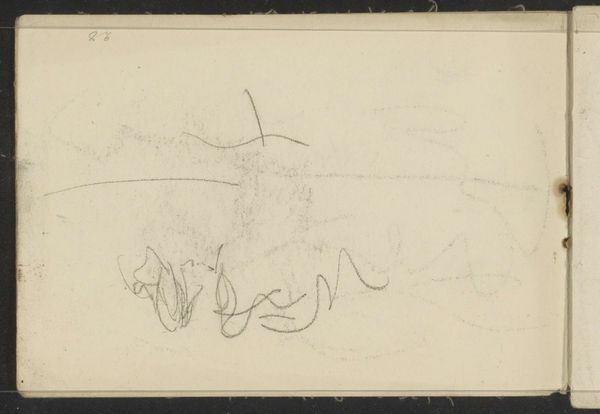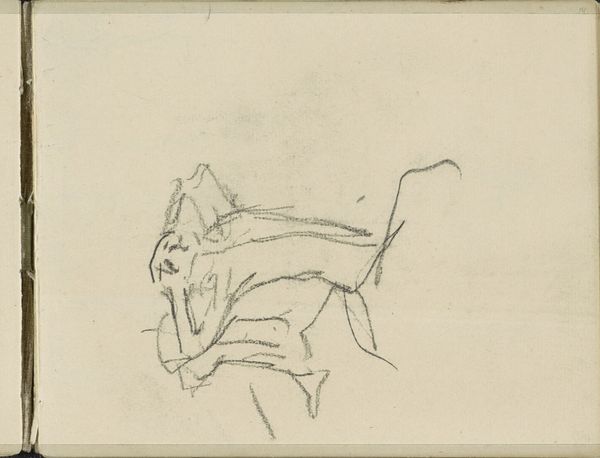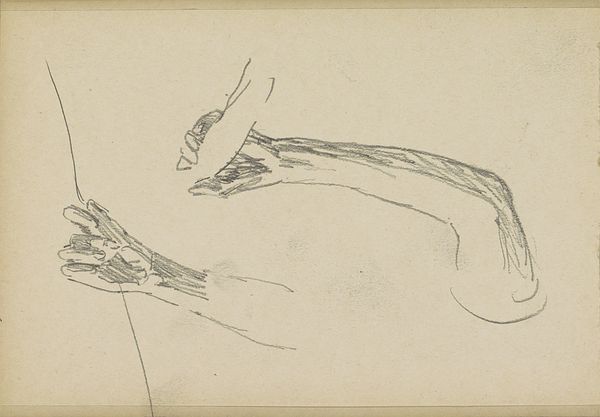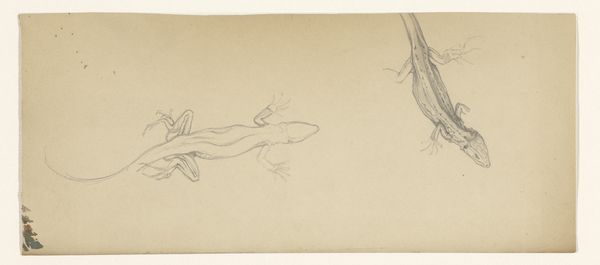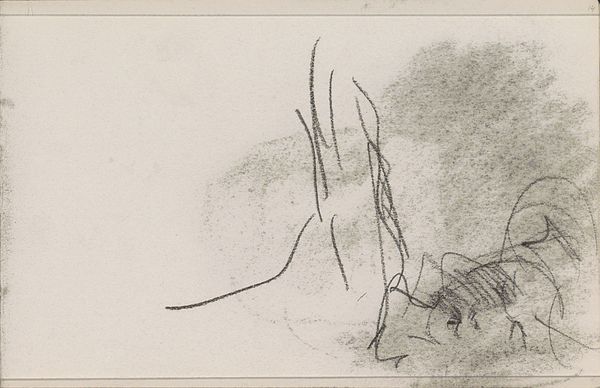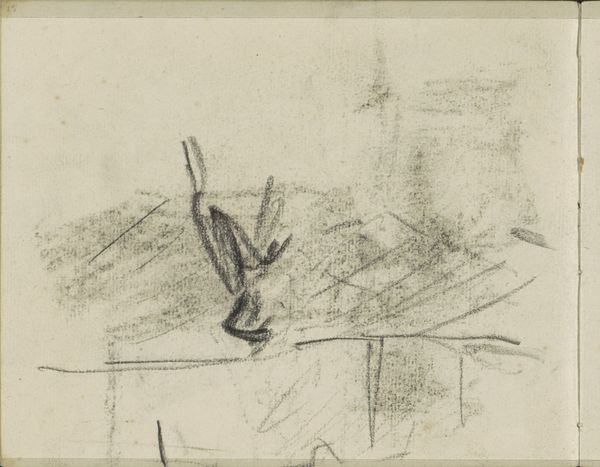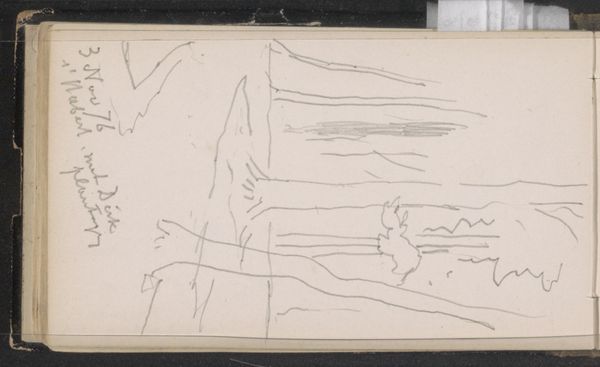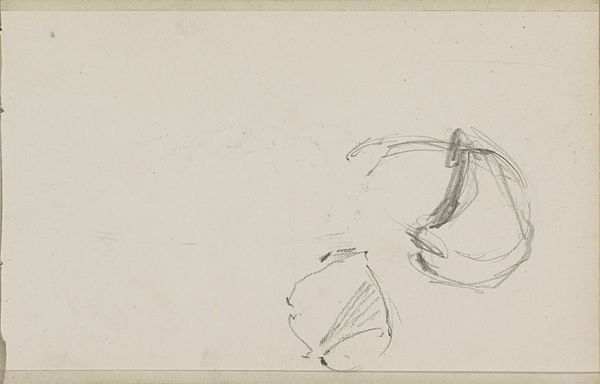
Ornament des Nick Bottom in der Rolle eines Tyrannen mit Keule, Schwert und Helm c. 1867 - 1868
0:00
0:00
Copyright: Public Domain
Editor: I find this sketch rather unsettling; the lightness of the line work combined with those sharp, weapon-like forms evokes a strange tension. Curator: Indeed. We are looking at "Ornament des Nick Bottom in der Rolle eines Tyrannen mit Keule, Schwert und Helm," an ornament drawing rendered circa 1867-1868 by Paul Konewka. The medium here is simple – graphite on paper – yet the potential for symbolic depth seems immense. Editor: The way he handles the graphite is compelling. Notice how the sketch remains unfinished; we can see erasures and the artist’s hand as if witnessing the thought process itself. It makes me wonder about its intended use, this preliminary approach hinting at an object destined for further elaboration. Curator: Absolutely. The drawing adheres loosely to the Romanticism style, discernible in its concentration on emotional and dramatic themes, but note also the commitment to idealized forms even in so raw a state. Editor: Right, and there's an implied critique in how these implements of power are depicted almost as theatrical props. One can ponder how Konewka uses the visual to examine the themes of power, performance, and possibly even tyranny through a material lens. I’m fascinated by what appears unfinished—the visible layers invite contemplation on artistic choices, revisions, and intended function. Curator: Furthermore, these rough lines betray a deeper structural strategy. The juxtaposition of the sword and mace below with the flourish of loops above creates an interesting dynamic tension that points to an anxiety beneath a formal design. The unfinished quality gives the piece power; it's not definitive, thus open for debate about it. Editor: It certainly raises questions about our consumption of art. This sketch emphasizes how a piece is fashioned; it highlights labor and the transformation of material substance into symbolic meaning—challenging traditional notions about artistic achievement and intent. Curator: Agreed, and analyzing that form deepens one's awareness. In concentrating on shape and structure as such, even an apparently modest piece provides rich aesthetic possibilities, demanding deeper interaction from those that perceive it. Editor: Precisely, this drawing allows us to ponder beyond established aesthetic codes and values. It illuminates labor; it renders material manipulation evident, forcing viewers like ourselves to engage not simply with finished artwork yet also using production procedures as well.
Comments
No comments
Be the first to comment and join the conversation on the ultimate creative platform.
